《IP路由技术原理 英文版》
| 作者 | (美)(M.A.斯波塔克)Mark A.Sportack著 编者 |
|---|---|
| 出版 | 北京:清华大学出版社 |
| 参考页数 | 510 |
| 出版时间 | 1999(求助前请核对) 目录预览 |
| ISBN号 | 7302036608 — 求助条款 |
| PDF编号 | 87534278(仅供预览,未存储实际文件) |
| 求助格式 | 扫描PDF(若分多册发行,每次仅能受理1册) |
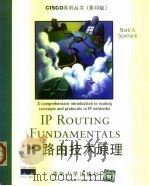
Part Ⅰ Internetworking Fundamentals 1
Chapter 1 An Introduction to Internetworking 3
The OSI Reference Model 4
The Seven Layers 5
ContentsIntroduction15
Misperceptions About the OSI Reference Model15
Logical Adj acency 17
The Mechanics of Logical Adj acency 18
Receiving the Bit Stream 23
The Need to Route 29
Routers 30
Summary 34
The Internet’s Address Architecture 35
Chapter 2 Understanding Internetwork Addresses 35
Advertising Network Addresses 37
IP Addressing 40
Binary Versus Decimal Numbers 41
IPv4 Address Formats 43
The Emergence of Subnetworks 51
Subnetting 52
VLSM 58
Classless Interdomain Routing 61
Classless Addressing 62
Enhanced Route Aggregation 62
Supernetting 63
How CIDR Works 64
Summary 65
LAN Domains 67
Chapter 3 Routers and LANs 67
The Media Access Domain 68
The MAC Broadcast Domain 73
LAN Segmentation 77
Segmenting with Bridges 78
Segmenting with Switches 85
Segmenting with Routers 89
The Differences Between Bridges,Switches,and Routers 92
LAN Backbones 93
Collapsed Backbones 94
Parallel Backbones 96
WAN Gateway 97
IP Network Domains 98
Summary 101
A Closer Look at Routers 103
Chapter 4 Routers and WANs 103
Physical Components 104
Router Functions 106
Roles of the Router in WANs 113
Internetworking Scenarios 117
WAN Performance Criteria 121
Component Uptime 122
Traffic Volumes 123
Delay 124
Resource Utilization Rates 125
Costs of the WAN 128
Summary 130
Part Ⅱ The Inner Workings of Routers 131
Chapter 5 Internet Protocols Versions 133
The Network Layer 134
The Transport Layer 135
Internet Protocol,Version 4(IPv4) 136
Dissecting TCP/IP 138
Internet Protocol,Version 6(IPv6) 151
IPv6 Unicast Address Structures 153
IPv6 Transitional Unicast Address Structures156
IPv6 Anycast Address Structures 157
IPv6 Multicast Address Structures 158
Summary 158
Chapter 6 Transmission Technologies 159
LAN Technologies 159
Ethernet 160
Token Ring 166
FDDI 167
ATM 173
WAN Technologies 174
Leased Lines 175
Circuit-Switched Facilities 175
Packet-Switched Facilities 178
Cell-Switched Facilities 183
Carrier System Standards 185
ANSI’s Digital Signal Hierarchy 185
ITU’s Digital Signal Hierarchy 187
SONET’s Carrier Systems 189
The T-Carrier System 191
Summary 193
Chapter 7 The Mechanics of Routing Protocols 195
Routing 195
Static Routing 197
Distance-Vector Routing 202
Link-State Routing 206
Hybridized Routing 209
Performance Characteristics of Hybridized Routing 210
Convergence211
Accommodating Topological Changes212
Convergence Time219
Route Calculation221
Storing Multiple Routes222
Initiating Updates223
Routing Metrics224
Summary225
Part Ⅲ Routing Protocols227
Chapter 8 Routing Information Protocol 229
The Origins of RIP 230
Xerox’s RIP 231
routed 232
RFC 1058 233
RFC 1058 Specifications 234
RIP Packet Format 234
The RIP Routing Table 239
Operational Mechanics 242
Calculating Distance Vectors 245
Updating the Routing Table 250
Addressing Considerations 255
Topology Changes 259
Convergence 259
Counting to Infinity 263
Hop Count Limit 272
Limitations of RIP 272
Fixed Metrics 273
Network Intensity of Table Updates 273
Slow Convergence 273
Lack of Load Balancing 274
Summary 275
Chapter 9 Routing Information Protocol Version 2 277
The Need to Update RIP 277
RIP-2:RFC 1723 279
RFC 1 723 Specifications 280
RIP-2 Message Format 280
Using RIP-2 Messages 284
RIP-2's New Features 286
Authentication 287
Subnet Masks 291
Next Hop Identification 291
Multicasting 295
Limitations of RIP-2 296
Summary 298
Chapter 10 Interior Gateway Routing Protocol 299
The Origins of IGRP 299
Needed Capabilities 301
Cisco’s Solution 302
An Overview of IGRP 302
Metrics 304
Using the Metrics 310
IGRP’s Mechanisms 314
Timing Mechanisms 314
Convergence Mechanisms 316
Operational Mechanics 320
Topological Changes 324
Multipath Routing 327
Equal-Cost Load Balancing 327
Unequal-Cost Load Balancing 331
Summary 337
Chapter 11 Enhanced Interior Gateway Routing Protocol339
EIGRP Background 340
Backward Compatibility with IGRP 341
EIGRP’s Improvements 343
New Features Found in EIGRP 344
Neighbor Discovery and Recovery 345
Reliable Transport Protocol 346
The Distributed Update Algorithm 347
Protocol-Specific Modules 348
EIGRP Data Structures 349
EIGRP Tables 349
EIGRP Packet Types 355
Convergence Using EIGRP 360
Summary 364
Chapter 12 Open Shortest Path First 367
The Origins of OSPF 368
RFC 2328 OSPF Version 2 369
OSPF Areas 370
Routing Updates 376
OSPF Data Structures 379
The Hello Packet 382
The Database Description Packet 383
The Link-State Request Packet 384
The Link-State Update Packet 385
The Link-State Acknowledgment Packet 391
Calculating Routes 392
Using Autocalculation 392
Using Default Route Costs 393
The Shortest-Path Tree 396
Summary 400
Part Ⅳ Implementation Issues 401
Chapter 13 Building Internetworks 403
A Blueprint for Success 403
Scale 404
Distances 404
Traffic Volumes 405
Performance Delays 407
Costs ofthe WAN 408
Topologies for Simple Internetworks 410
Peer-to-Peer Topology 410
Ring Topology 412
Star Network Topology 414
Partial Mesh Topology 417
Topologies for Large Internetworks 419
Full Mesh 419
Two-Tiered Topology 421
Three-Tiered Topology 423
Hybrid Topologies 424
Before You Build the WAN 425
Determining Backbone Loads 426
Placing Gateways 428
Selecting Transmission Technologies 429
Selecting Routing Protocols 430
After You Build the WAN 431
Component Uptime 432
Traffic Volumes 433
Resource Utilization 434
Summary 437
Chapter 14 Internetworking with Dissimilar Protocols 439
Dissimilar Architectures 440
Dissimilar Routed Protocols 441
Redundant Routed Protocols 441
Gateways 444
Tunnels 445
Dissimilar Routing Protocols 447
Integrated Routing Protocols 448
Redundant Routing Protocols 450
Redistributing Routing Information 452
The Mechanics of Route Redistribution 457
Summary 461
Chapter 15 The Future of Routing463
Computer-Based Routers464
Today’s Products466
The New Uses of Computer-Based Routing466
Multilayer Switches468
Benefits and Uses of Multilayer Switches469
Next-Generation Routing471
The Effects of IPv6472
IPSec473
Isochronous Services479
Summary483
Index485
1999《IP路由技术原理 英文版》由于是年代较久的资料都绝版了,几乎不可能购买到实物。如果大家为了学习确实需要,可向博主求助其电子版PDF文件(由(美)(M.A.斯波塔克)Mark A.Sportack著 1999 北京:清华大学出版社 出版的版本) 。对合法合规的求助,我会当即受理并将下载地址发送给你。
高度相关资料
-
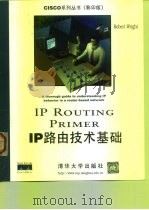
- IP路由技术基础 英文版
- 1999 北京:清华大学出版社
-

- 经济学原理:英文版
- 1998年07月第1版
-

- 示波器原理与电路技术
- 1981
-

- TCP/IP路由技术卷一
- 1999
-

- TCP/IP网络原理与技术
- 1993
-
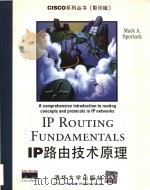
- IP Routing fundamentals = IP 路由器技术原理 (影印版)
- 1999 清华大学出版社
-

- 自由秩序原理 英文本
- 1999 北京:中国社会科学出版社
-
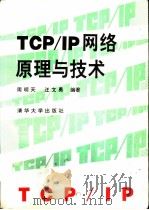
- TCP/IP网络原理与技术
- 1993 北京:清华大学出版社
-
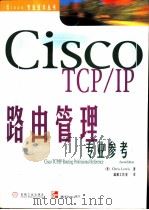
- Cisco TCP/IP路由管理专业参考
- 1999 北京:机械工业出版社
-

- 示波器原理与电路技术
- 1981 成都:四川人民出版社
-

- 审计学原理 英文版·第12版
- 1998 北京:机械工业出版社
-
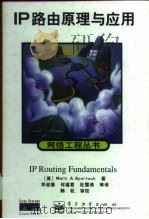
- IP路由原理与应用
- 1999 北京:电子工业出版社
-
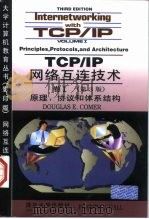
- TCP/IP网络互连技术 卷1 原理,协议和体系结构 英文版·第3版
- 1998 北京:清华大学出版社
-
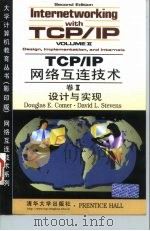
- TCP/IP网络互连技术 卷2 设计与实现 英文版·第2版
- 1998 北京:清华大学出版社
提示:百度云已更名为百度网盘(百度盘),天翼云盘、微盘下载地址……暂未提供。➥ PDF文字可复制化或转WORD
